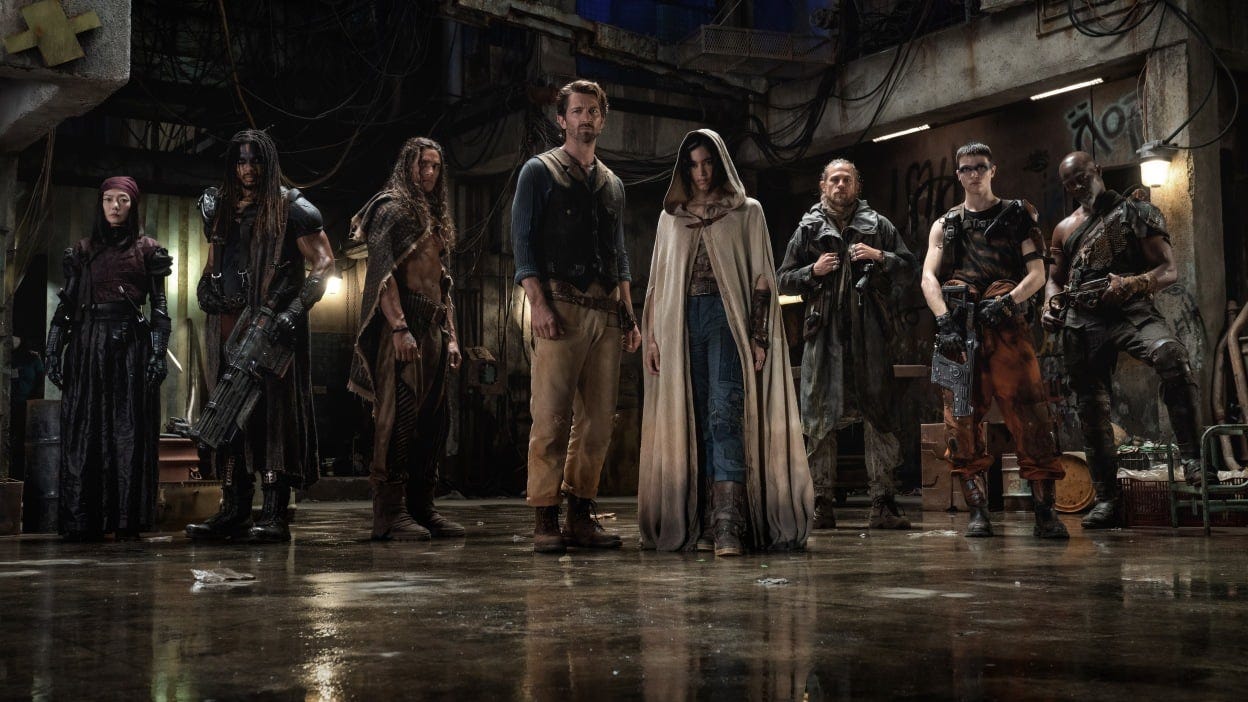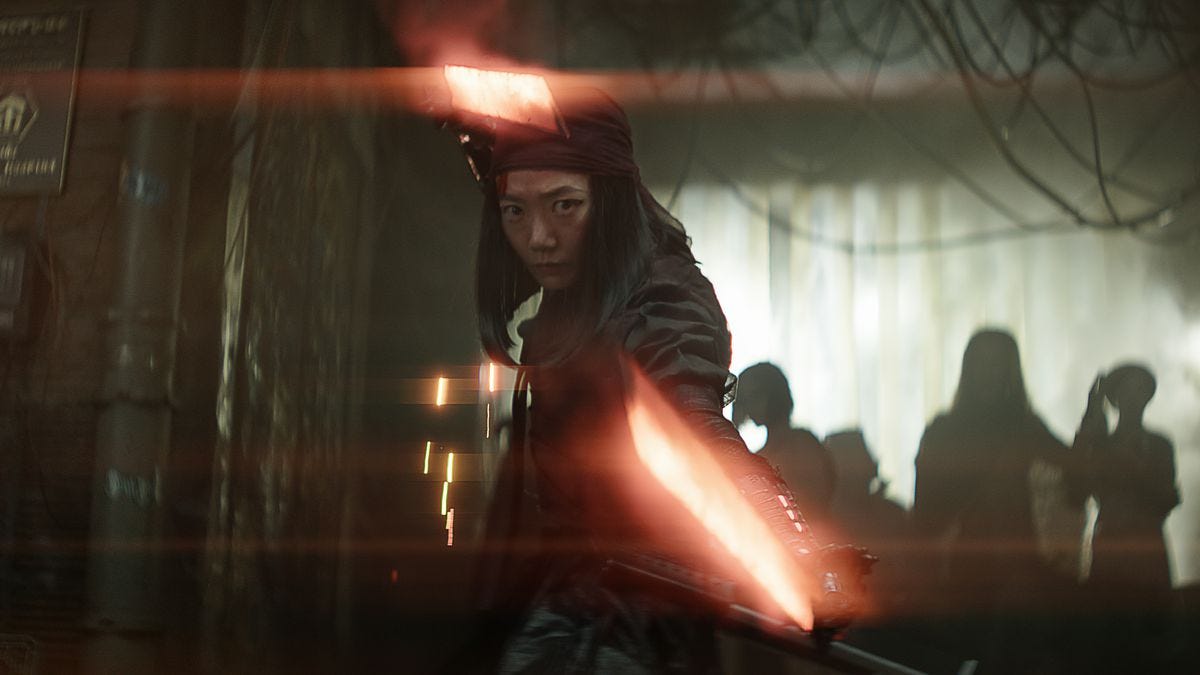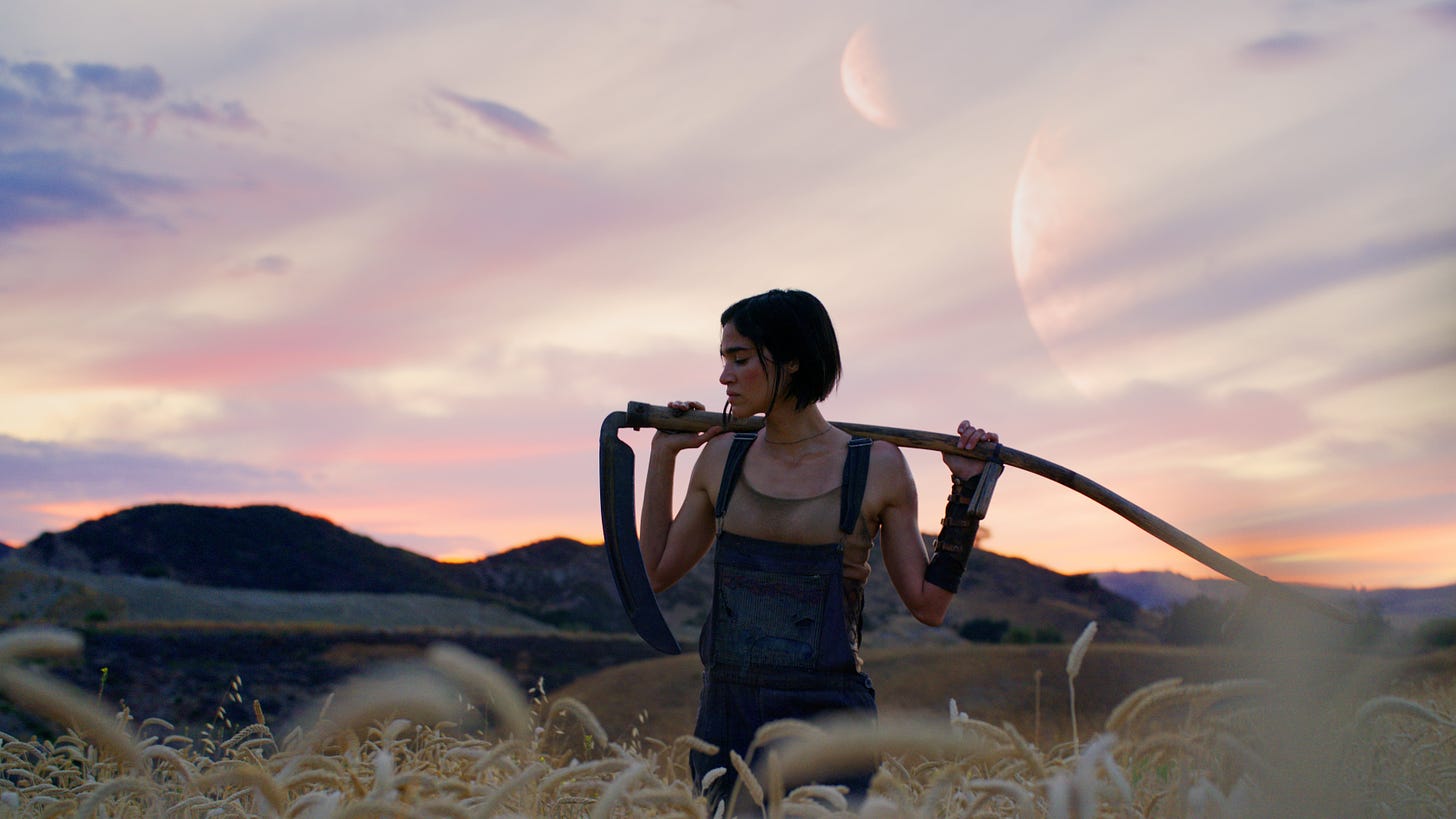
Will We Ever Be Able to Say if ‘Rebel Moon — Part One: A Child of Fire’ Was a Hit or a Flop?
The first part of Zack Snyder’s ‘Star Wars’-inspired blockbuster debuted on Netflix nearly a month ago. Should it be called a success or a failure?
With not as much fanfare as might have been expected, Netflix premiered one of the biggest movies it’s ever produced last month. After an extremely limited theatrical release on December 15, Rebel Moon — Part One: A Child of Fire debuted on the service on December 22. Despite scathing reviews, it quickly shot to the top spot on Netflix’s most-watched list. That result seemingly confirmed Netflix’s instincts in letting Zack Snyder create a two-part, big-budget space opera with designs on launching a franchise. Yet every subsequent development, from the film’s fairly rapid descent down the same chart to intangible factors like cultural traction, has muddied up the picture, making Rebel Moon a case study in how the film business defines success in the mid-‘20s, and whether that definition makes any sense. To look at the film from virtually any angle is to be pelted with conflicting data points.
Well, almost any angle. As a film, it’s rough going, even if you’re inclined to try to look on the bright side of the Zack Snyder filmography.
Twenty years into Snyder’s feature film career, I’m not sure he’s yet topped the thrilling opening segment (and only the opening segment) of his Dawn of the Dead remake. But both 300 and Watchmen work pretty well as literal-minded translations of their comic book sources, though the latter’s hamstrung by Snyder’s seeming inability to grasp Watchmen’s subtext and the former is made uncomfortable by the skillfulness with which he seemingly does understand 300’s. Sucker Punch might be his best film overall, a visually stunning exercise that on some level wants to say something meaningful about patriarchal oppression but sends a lot of mixed messages in the process. I think DC’s film ventures were largely undone by Snyder pushing the universe in the direction of badass darkness yet Zack Snyder’s Justice League, the epic recut that debuted on HBO Max, is surprisingly entertaining.
As with all things Snyder, his filmography presents an array of contradictions. If there’s a defining quality, it’s his ability to create striking images in service of half-baked, action-packed stories that rarely aspire to be more than adolescent power fantasies—but with a bit more elegance than, say, Michael Bay. Snyder’s Netflix ventures have allowed him to dream big, but also revealed those dreams have a pretty low ceiling. 2021’s Army of the Dead takes a clever idea — a kind of mash-up of a zombie movie and Ocean’s 11 — and executes it in the most predictable way possible, adding a dusting of Aliens on top in the process. Like Rebel Moon, it was conceived as the hub of a franchise. It’s so far spun off a prequel (Army of Thieves) with a sequel, Planet of the Dead, said to be in development and an anime spin-off (Army of the Dead: Lost Vegas) that’s seemingly stalled out but might see the light of day (reports vary).
That brings us to Rebel Moon, although the Rebel Moon story itself requires a couple of leaps back in time. Co-writer Kurt Johnstad, who also co-wrote 300 and its sequel with Snyder, dates its conception back to a long-ago plane trip in which the two discussed Star Wars and The Seven Samurai. Snyder has traced its sources to his film school days, and cited The Magnificent Seven and The Dirty Dozen as influences. Its more immediate origins, however, date back to Snyder’s pitch for an R-rated Star Wars movie shortly before Lucasfilm opted instead to relaunch the series with The Force Awakens.
Though a hard-hitting, Snyder-ized take on Star Wars seems unlikely ever to have come to fruition, it at least reached the concept art stage and it’s easy to see the Star Wars DNA in Rebel Moon — Part One: A Child of Fire. In fact, it’s easy to see several films’ DNA in Rebel Moon, whose core plot involves a band of misfit warriors joining forces to help a farming village stand up to an evil band of armed bullies intent on stealing their grain. If that sounds a lot like The Seven Samurai, there’s good reason. (And if the idea of transplanting Kurosawa’s classic to a Star Wars-influenced science fiction universe sounds a lot like the John Sayles-penned Roger Corman movie Battle Beyond the Stars, there might be good reason for that, too.)
It is, of course, a bit silly to think of any movie as being overly derivative of Star Wars since Star Wars itself is so unapologetically derivative, borrowing openly and unapologetically from Kurosawa, old serials, Dune, swashbucklers, World War II movies, and anything else George Lucas thought would work in the mix. It’s even easy to look past the sword lasers (one might even call them “sabers-made-of-light,” or something). But there are a couple of moments that make clear what Snyder’s vision of Star Wars would be.
One is an almost note-for-note cover of the first Star Wars film’s cantina scene, only this time it involves a hero fending off a violent pest attempting to hire him as a sex worker. In the second, the film’s space Nazi villain Atticus Noble (Ed Skrein) questions a wondrous-looking alien creature, one of the handsome film’s many impressive production design and effects touches. The conversation ends with Noble smashing in the poor guy’s brains — the Snyder Touch. Add in an array of semi-charismatic stars (Sofie Boutella, Ray Fisher, Charlie Hunnam, etc/) and a robot voiced by Anthony Hopkins and you can probably figure what the rest of the movie’s like if you don’t want to take the two-plus exposition- and slow-mo heavy hours to watch Rebel Moon (or the first half of it, anyway).
Critics trounced the film. At Indiewire, David Ehrlich summed it up as “134 minutes of agonizing tedium that are only interrupted by the occasional jolt of sadness for the wasted talent of everyone involved.” But did that really matter? After its debut, some outlets were quick to run stories trumpeting it as a success that proved it was made for the fans, not critics, seemingly taking their cues from Snyder’s triumphant X post filmed on the set of the film (or perhaps another planet).
And yet, to return to the original question, was it? Rebel Moon drew 23.9 million views in its first three days, which sounds impressive. But compared to the first three days of other Netflix original movies released in 2023, that puts it well below the top film in that time frame (Murder Mystery 2, 42.9 million) but also behind The Mother, Extraction 2, Leave the World Behind, Heart of Stone, You People, The Killer, and Your Place or Mine. By the first week of 2024, it had dropped out of Netflix’s top ten movies list, topped by, among other films, The Meg 2, The First Purge, and, ouch, the original cut of Justice League.
So, that makes it a failure right? Well, wait a minute: What is a failure? In 2024, we’ll be getting both the second part of the movie (Rebel Moon — Part Two: The Scargiver, arriving April 19) and an R-rated version of Child of Fire. This will then presumably be followed by an R-rated cut of The Scargiver and then sequels? Maybe? Like Extraction and The Gray Man, Rebel Moon hit Netflix with designs on being a many-tendriled franchise. So perhaps success can be measured in whether or not it can go the distance in that respect. If two years from now we’re still getting a steady stream of Rebel Moon product, then someone somewhere considers it a success. Maybe converting Snyder’s fervent fanbase into Netflix subscribers moves the needle enough to make it worth Rebel Moon’s reported $166 million budget (for both parts).
But, like so many streaming blockbusters, Rebel Moon’s presence seems almost spectral. A lot of work went into making and releasing the film — the credits seem almost as long as the preceding film — and numbers suggest viewers did watch it, at least at first. But doesn’t it also seem non-existent? I hate to turn again to intangibles, but do you feel this movie’s presence anywhere in the world? Like him or not, Snyder is a major filmmaker here inventing — with some borrowed parts — a whole cosmos to fill with fantastic creatures, soaring spaceships, and ultraviolent adventures threatened at all times by the possibility of sexual violence. This should be an event, right? A hit? And maybe, by the standards of the streaming era, it was both. Maybe we just need to readjust what those words mean, even if that makes them essentially meaningless.


















Streaming is just so ephemeral...I mean, I have to admit, until this article I had not even HEARD of Rebel Moon, let alone watched it, and I'm a movie fan. Admittedly I guess I'm more focused on prestige pictures at this time of year, but still, I hate how "blockbusters" on Netflix don't bust any blocks because they're not events in the slightest. They fade into oblivion and make no mark on filmgoing society (let alone pop culture) in the slightest.
I clicked the headline and then tried to skim through the article so I could do a comedy routine about how back in my day, movies had simple one-word names like JAWS and THEGODFATHER, but then damned if your prose didn't just grab me and I ended up reading the whole article. That's some damn fine writing!